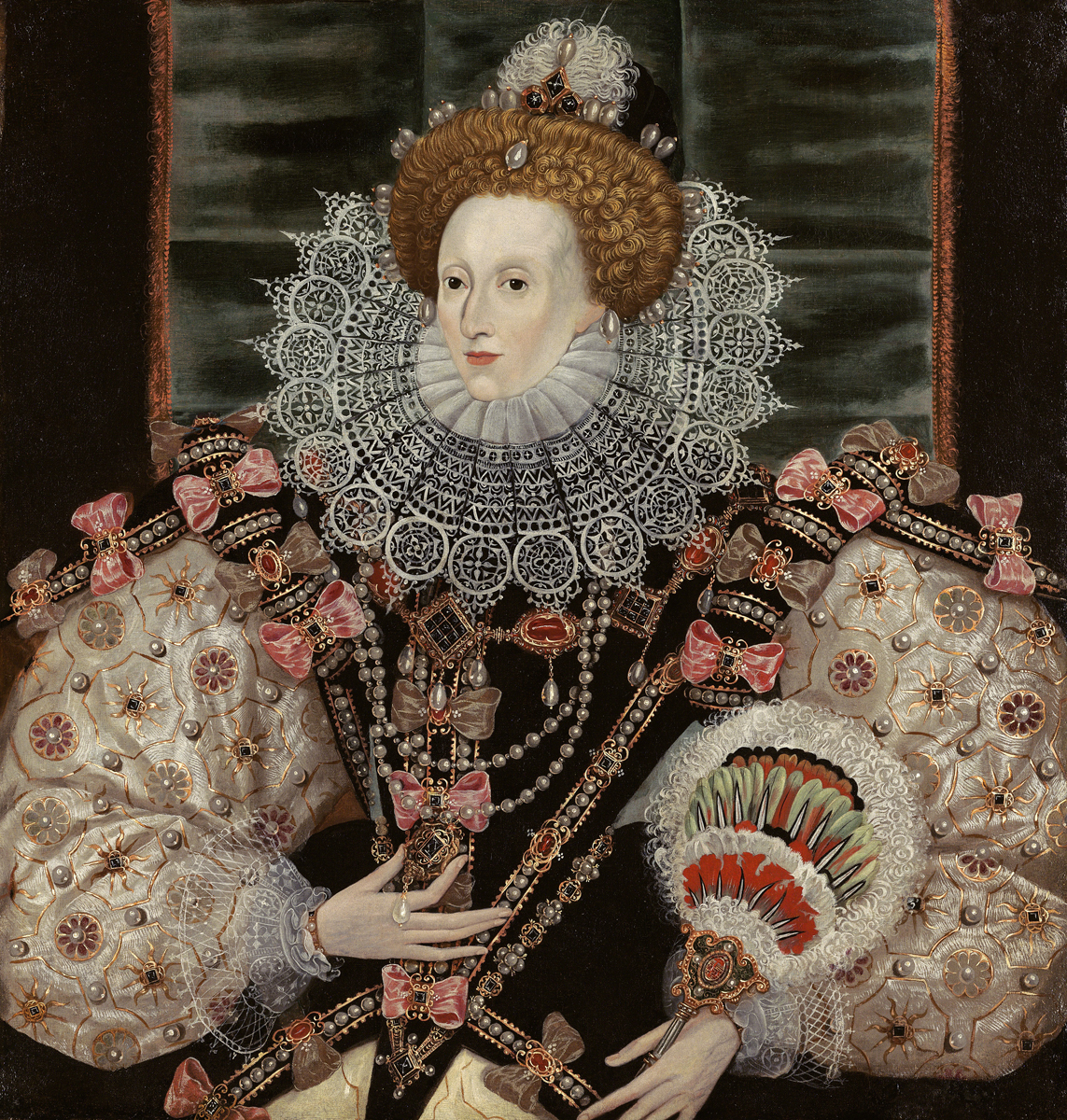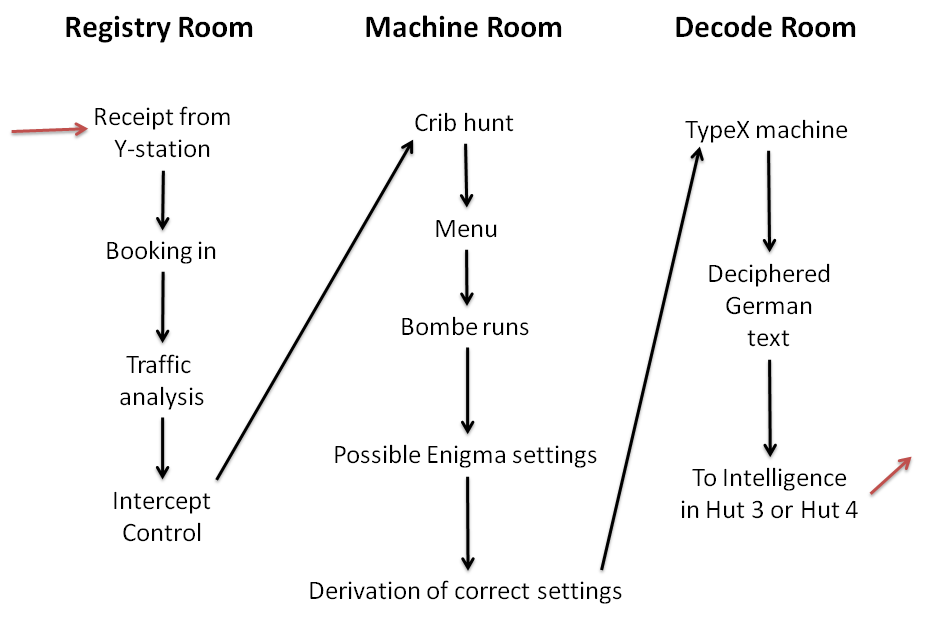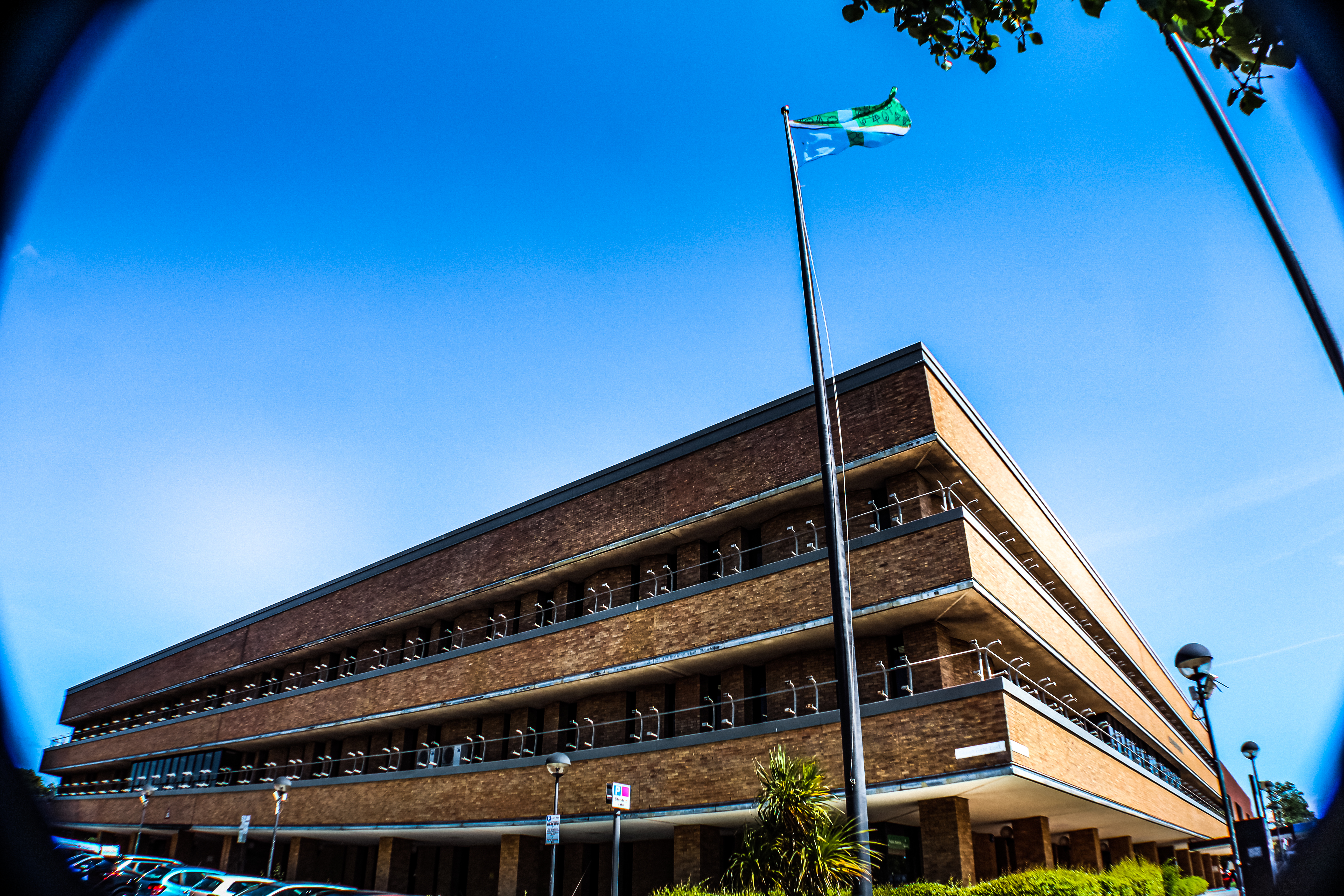|
Gayhurst
Gayhurst is a village and civil parish in the unitary authority area of the City of Milton Keynes, Buckinghamshire, England. It is about NNW of Newport Pagnell, and north of Central Milton Keynes. The village name is an Old English language word meaning 'wooded hill where goats are kept'. In the Domesday Book in 1086 it was recorded as ''Gateherst''; later names include Goathurst. At that time the manor was owned by Bishop Odo of Bayeux. History In 1582, Queen Elizabeth I made a grant of Gayhurst Manor "in the event of its reversion to the Crown" to Sir Francis Drake, but there is no record that he ever received it. The house once belonged to Sir Everard Digby (1578–1606), one of the conspirators in the Gunpowder Plot of 1605. His son, Sir Kenelm Digby (1603–1665), was an English courtier, diplomat, natural philosopher and astrologer. He was born at Gayhurst. Gayhurst had an outstation from the Bletchley Park codebreaking establishment, where one of the Bombe ... [...More Info...] [...Related Items...] OR: [Wikipedia] [Google] [Baidu] |
Gayhurst House
Gayhurst House (now known as Gayhurst Court) is a late-Elizabethan country house in Buckinghamshire. It is located near the village of Gayhurst, several kilometres north of Milton Keynes. The earliest house dates from the 1520s. In 1597 it was greatly expanded by William Moulsoe. His son-in-law, Everard Digby, completed the rebuilding, prior to his execution in 1606 for participating in the Gunpowder Plot. The house was subsequently owned by the Wrightes, and latterly the Carringtons. Robert Carrington engaged William Burges who undertook much remodelling of both the house and the estate, although his plans for Gayhurst were more extensive still. In the 20th century, the Carringtons sold the house, although retaining much of the surrounding estate. It is now divided into flats, with further housing in the surrounding estate buildings. The house and the adjacent Church of St Peter are Grade I listed buildings and many of the buildings in the grounds have separate listings. Gayhur ... [...More Info...] [...Related Items...] OR: [Wikipedia] [Google] [Baidu] |
Everard Digby
Sir Everard Digby (c. 1578 – 30 January 1606) was a member of the group of provincial members of the English nobility who planned the failed Gunpowder Plot of 1605. Although he was raised in an Anglican household and married a Protestant, Digby and his wife were secretly received into the strictly illegal and underground Catholic Church in England by the Jesuit priest Fr. John Gerard. In the autumn of 1605, he made a Christian pilgrimage to the shrine of St Winefride's Well in Holywell, Wales. About this time, he met Robert Catesby, who was planning to blow up the House of Lords with gunpowder as an alleged act of tyrannicide and a decapitation strike against King James I. Catesby then planned to lead a popular uprising aimed at regime change, through which a Catholic monarch would be placed upon the English throne. The full extent of Digby's knowledge of and involvement in the plot is unknown, but at Catesby's behest, Digby rented Coughton Court and prepared a "hunting p ... [...More Info...] [...Related Items...] OR: [Wikipedia] [Google] [Baidu] |
Bombe
The bombe () was an Electromechanics, electro-mechanical device used by British cryptologists to help decipher German Enigma machine, Enigma-machine-encrypted secret messages during World War II. The United States Navy, US Navy and United States Army, US Army later produced their own machines to the same functional specification, albeit engineered differently both from each other and from Polish and British bombes. The British bombe was developed from a device known as the "Bomba (cryptography), bomba" (), which had been designed in Poland at the Biuro Szyfrów (Cipher Bureau) by cryptologist Marian Rejewski, who had been breaking German Enigma machine, Enigma messages for the previous seven years, using it and earlier machines. The initial design of the British bombe was produced in 1939 at the UK Government Code and Cypher School (GC&CS) at Bletchley Park by Alan Turing, with an important refinement devised in 1940 by Gordon Welchman. The engineering design and construction ... [...More Info...] [...Related Items...] OR: [Wikipedia] [Google] [Baidu] |
Gunpowder Plot
The Gunpowder Plot of 1605, in earlier centuries often called the Gunpowder Treason Plot or the Jesuit Treason, was an unsuccessful attempted regicide against James VI and I, King James VI of Scotland and I of England by a group of English Catholics, English Roman Catholics, led by Robert Catesby, who considered their actions attempted tyrannicide and who sought regime change in England after decades of religious persecution. The plan was to blow up the House of Lords during the State Opening of Parliament on Tuesday 5 November 1605, as the prelude to a popular revolt in the English Midlands, Midlands during which King James's nine-year-old daughter, Elizabeth Stuart, Queen of Bohemia, Princess Elizabeth, was to be installed as the new head of state. Catesby is suspected by historians to have embarked on the scheme after hopes of greater religious tolerance under James VI and I, King James I had faded, leaving many English Catholics disappointed. His fellow conspirators were ... [...More Info...] [...Related Items...] OR: [Wikipedia] [Google] [Baidu] |
City Of Milton Keynes
The City of Milton Keynes is a Borough status in the United Kingdom, borough with City status in the United Kingdom, city status, in Buckinghamshire, England. It is the northernmost district of the South East England Regions of England, Region. The borough abuts Bedfordshire, Northamptonshire and the remainder of Buckinghamshire. The borough is administered by Milton Keynes City Council, a Unitary authorities of England, unitary authority. The principal built-up area in the borough is the Milton Keynes urban area, which accounts for about 20% of its area and 90% of its population. The borough also includes many rural areas surrounding the Milton Keynes urban area (especially to the north), containing several villages and the town of Olney, Buckinghamshire, Olney. At the 2021 census, the population of the unitary authority area was just over 287,000. History The district was created on 1 April 1974 under the Local Government Act 1972, covering the whole area of four former di ... [...More Info...] [...Related Items...] OR: [Wikipedia] [Google] [Baidu] |
Bletchley Park
Bletchley Park is an English country house and Bletchley Park estate, estate in Bletchley, Milton Keynes (Buckinghamshire), that became the principal centre of Allies of World War II, Allied World War II cryptography, code-breaking during the Second World War. During World War II, the estate housed the Government Code and Cypher School (GC&CS), which regularly penetrated the secret communications of the Axis Powers most importantly the German Enigma machine, Enigma and Lorenz cipher, Lorenz ciphers. The GC&CS team of codebreakers included John Tiltman, Dilwyn Knox, Alan Turing, Harry Golombek, Gordon Welchman, Conel Hugh O'Donel Alexander, Hugh Alexander, Donald Michie, W. T. Tutte, Bill Tutte and Stuart Milner-Barry. The team at Bletchley Park devised automatic machinery to help with decryption, culminating in the development of Colossus computer, Colossus, the world's first programmable digital electronic computer. Codebreaking operations at Bletchley Park ended in 1946 and al ... [...More Info...] [...Related Items...] OR: [Wikipedia] [Google] [Baidu] |
Kenelm Digby
Sir Kenelm Digby (11 July 1603 – 11 June 1665) was an English courtier and diplomat. He was also a highly reputed natural philosopher, astrologer and known as a leading Roman Catholic intellectual and Thomas White (scholar), Blackloist. For his versatility, he is described in John Pointer (antiquary), John Pointer's ''Oxoniensis Academia'' (1749) as the "Magazine of all Arts and Sciences, or (as one stiles him) the Ornament of this Nation". Early life and education Digby was born at Gayhurst, Buckinghamshire, England. He was of gentry stock, but his family's adherence to Catholic Church, Roman Catholicism coloured his career. His father, Everard Digby, Sir Everard, was executed in 1606 for his part in the Gunpowder Plot. Kenelm was sufficiently in favour with James VI and I, James I to be proposed as a member of Edmund Bolton's projected Royal Academy (with George Chapman, Michael Drayton, Ben Jonson, John Selden and Sir Henry Wotton). His mother was Mary, daughter of William ... [...More Info...] [...Related Items...] OR: [Wikipedia] [Google] [Baidu] |
Milton Keynes City Council
Milton Keynes City Council is the Local government in England, local authority for the City of Milton Keynes, a local government district in Buckinghamshire, England. The council was established in 1974 as Milton Keynes Borough Council. Since 1997 it has been a Unitary authorities of England, unitary authority, being a non-metropolitan district, district council which also performs the functions of a non-metropolitan county, county council; it is independent of Buckinghamshire Council, the unitary authority which administers the rest of the county. The council has been under Labour Party (UK), Labour majority control since 2024. It is based at Milton Keynes Civic Offices. History The non-metropolitan district of Milton Keynes and its council were created on 1 April 1974 under the Local Government Act 1972, by the merger of Bletchley Urban District, Newport Pagnell Urban District, Wolverton Urban District, Newport Pagnell Rural District and that part of Winslow Rural District ... [...More Info...] [...Related Items...] OR: [Wikipedia] [Google] [Baidu] |
Villages In Buckinghamshire
A village is a human settlement or Residential community, community, larger than a hamlet (place), hamlet but smaller than a town with a population typically ranging from a few hundred to a few thousand. Although villages are often located in rural areas, the term urban village is also applied to certain urban neighborhoods. Villages are normally permanent, with fixed dwellings; however, transient villages can occur. Further, the dwellings of a village are fairly close to one another, not scattered broadly over the landscape, as a dispersed settlement. In the past, villages were a usual form of community for societies that practice subsistence agriculture and also for some non-agricultural societies. In Great Britain, a hamlet earned the right to be called a village when it built a Church (building), church. [...More Info...] [...Related Items...] OR: [Wikipedia] [Google] [Baidu] |
Listed Building
In the United Kingdom, a listed building is a structure of particular architectural or historic interest deserving of special protection. Such buildings are placed on one of the four statutory lists maintained by Historic England in England, Historic Environment Scotland in Scotland, in Wales, and the Historic Environment Division of the Department for Communities in Northern Ireland. The classification schemes differ between England and Wales, Scotland, and Northern Ireland (see sections below). The term has also been used in the Republic of Ireland, where buildings are protected under the Planning and Development Act 2000, although the statutory term in Ireland is "Record of Protected Structures, protected structure". A listed building may not be demolished, extended, or altered without permission from the local planning authority, which typically consults the relevant central government agency. In England and Wales, a national amenity society must be notified of any work to ... [...More Info...] [...Related Items...] OR: [Wikipedia] [Google] [Baidu] |
Enigma Machine
The Enigma machine is a cipher device developed and used in the early- to mid-20th century to protect commercial, diplomatic, and military communication. It was employed extensively by Nazi Germany during World War II, in all branches of the Wehrmacht, German military. The Enigma machine was considered so secure that it was used to encipher the most top-secret messages. The Enigma has an electromechanical Rotor machine, rotor mechanism that scrambles the 26 letters of the alphabet. In typical use, one person enters text on the Enigma's keyboard and another person writes down which of the 26 lights above the keyboard illuminated at each key press. If plaintext is entered, the illuminated letters are the ciphertext. Entering ciphertext transforms it back into readable plaintext. The rotor mechanism changes the electrical connections between the keys and the lights with each keypress. The security of the system depends on machine settings that were generally changed daily, based ... [...More Info...] [...Related Items...] OR: [Wikipedia] [Google] [Baidu] |
Sir Francis Drake
Sir Francis Drake ( 1540 – 28 January 1596) was an English Exploration, explorer and privateer best known for making the Francis Drake's circumnavigation, second circumnavigation of the world in a single expedition between 1577 and 1580 (being the first English expedition to accomplish this). He is also known for participating in the early English slaving voyages of his cousin, John_Hawkins_(naval_commander), John Hawkins, and John_Lovell_(slave_trader), John Lovell. Having started as a simple seaman, in 1588 he was part of the fight against the Spanish Armada as a vice admiral. At an early age, Drake was placed into the household of a relative, William Hawkins (died c. 1554), William Hawkins, a prominent sea captain in Plymouth. In 1572, he set sail on his Francis Drake's expedition of 1572–1573, first independent mission, privateering along the Spanish Main. Drake's circumnavigation began on 15 December 1577. He crossed the Pacific Ocean, until then an area of exclusive ... [...More Info...] [...Related Items...] OR: [Wikipedia] [Google] [Baidu] |









